“Injection overmolding has become a reliable technique to fabricate intricate design products from small scale to large volumes in fast leads. Its use has now become common across automotive and consumer product industries.”

The technique refers to the quickest, multi-step process of molding one layer of a polymer using the TPU injection molding methodology over a substrate part. It usually stands for the mechanical entanglement of the polymeric molecules. Typically, it is a type of injection molding process. The substrate part (the toughest portion) is usually made of plastic in general and results from the injection molding process. From toothbrush making to vibration damping, and crucial interior durable, and resilient parts of automobiles, and aerospace, and gained significant attention to form parts at a small scale. The process is carried out by chemical or physical interlocking.
This article provides valuable details on over-molding, its process, and types; such as plastic, and metal overmolding, and other vital aspects related to design.
Overmolding Process: Step-by-Step Guide
Overmolding involves various steps, from the designing phase to the end-use product. Here’s a step-by-step guide to the process.
1. Mold Design Phase:
The first step is the virtual 3D or 2D vector geometrical design of manufacturability (DFM) of the intended part. Based on the design, a mold is curated according to a substrate for product development.
2. Substrate Preparation:
The substrate, being a crucial part, is generally made of tough materials like TPU, silicon rubber, or TPE, depending upon the product requirements. CNC machining is typically used to form substrate materials. It usually requires pretreatment or preheating to enhance the adhesion and grip of parts being over-molded.
3. Two-shot Injection Molding
In the two-shot Injection molding process, the substrate (primary material), is inserted into the mold die, and the overmold material is melted, and injected to pour it over the substrate to form a durable overmold product.
4. Post Processing
The last phase of the overmolding process is to get the required surface finishing. This way, various finishing options, including trimming, flash removal, anodizing, and chemical coating contribute to meeting exact product specifications.
Try Prolean Now!
What Are The Common Materials Used For Overmolding Process?
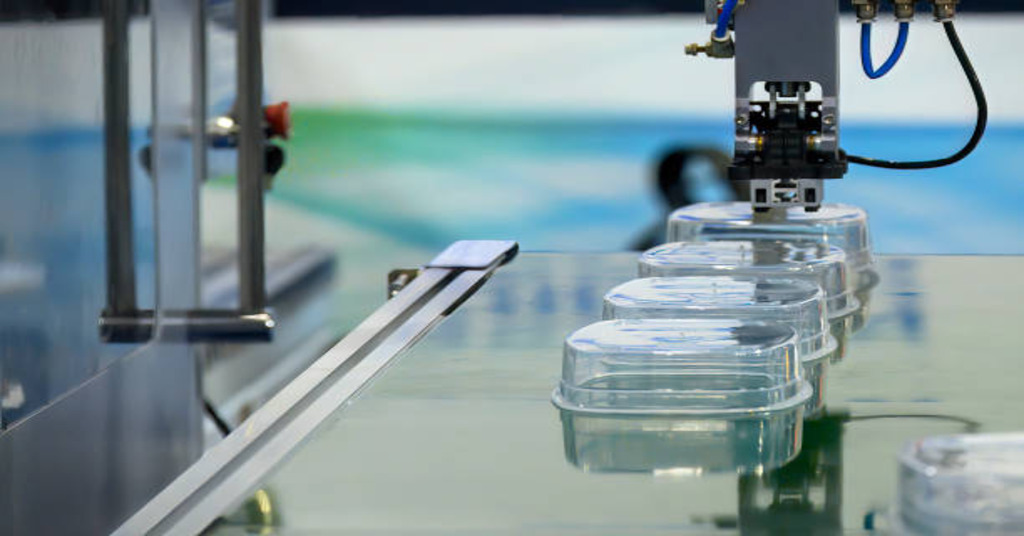
Plastic injection molding
There are various plastic overmolding materials used in the process from flexible thermoplastics to sturdy ones. The ultimate usage depends on required part strength, and features. Some of the commonest material types used include; acrylonitrile butadiene styrene, polypropylene, LDPE (Low-density polyethylene), HDPE (high-density polyethylene), Thermoplastic elastomers TPEs, Delrin (POM), and polyetherimide (PEI).
Among these, ABS is highly favored for its distinct features in enclosures and functional testing prototype applications. These characteristics include; chemical compatibility, and the ability to deal with peeling-off issues by providing high strength. Further, when it comes to polypropylene strength, it offers high chemical stability, and the ability to withstand harsh environmental conditions. Moreover, it provides an ease of manufacturability and lends its use to disposable medical components, aesthetic gips, ergonomics, and interior electronic parts.
Additionally, low-density polyethylene materials are low-cost and well-suited to fabricate overmolded products, such as valve components, food-grade items, storage chambers, and gas pipes. It also heavily contributes to applications including industrial food-safe bagging, juice containers, medical prosthetics, and extrusion molding components.
Alongside, elastomeric thermoplastics like TPEs, offer high performance, and adaptability to molding products. These materials belong to a family of thermoplastic vulcanizates, TPVs, and some other related classes such as; thermoplastic polyolefin elastomers, and styrene block copolymeric compounds. Further to applications, TPEs are highly valuable for fabricating parts for automotive sporting goods and footwear. Some common examples include air ducts, glass encapsulation, high/low-pressure pipes, flippers, and sky pole handles.
Furthermore, engineered grade Delrin or polyoxymethylene offers the lowest surface energies and is suited for manufacturing parts such as threaded inserts and coupling parts fabrication. Another high-performance engineered grade thermoplastic polyetherimide(PEI) contributes to engineering applications. The high-temperature resistance, ability to mold to veritably tight tolerance parts, customization solutions, and fabricating high-standard scientific components are peculiar features of this engineering-grade plastic. Moreover, it is usually over-molded on metallic base parts(substrate), whenever employed in over-molding applications.
Related To: Best Material for Injection Molding: Which One Suits Your Needs?
Types of Overmolding Processes
Several types of overmolding processes include insert molding, injection molding, two-shot molding, and urethane casting. Let’s discuss each type in brief detail;
Insert Molding
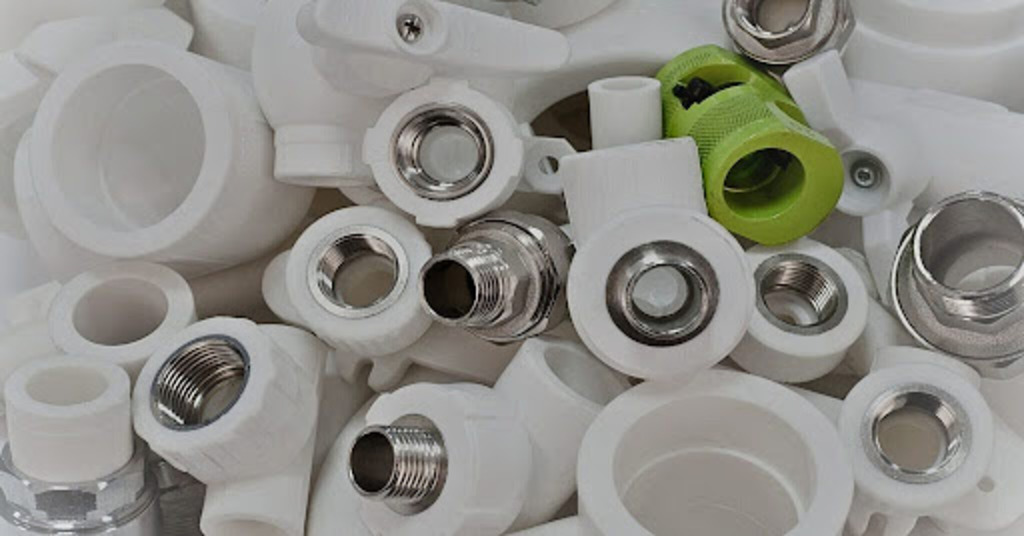
Insert molding
Insert molding, as the name implies, simply inserts a metal part into a part being injection molded in a single shot. Therefore, also known as a single-shot process, insert molding effectively eliminates post-processing requirements, offers speedy production cycles, and an unlimited number of design configurations when it comes to bulk volumes of composite parts or product fabrication. In addition to adaptability, insert molding is usually favored for time-sensitive productions. Because it offers a quick approach to bringing designs to practicality in a short turnaround.
Two Shot Injection Molding

2k injection molding
Injection molding is a conventional plastic overmolding technique usually known by other names such as bi- or 2k- or dual-overmolding. As the name suggests, it involves two separate injection-molded units at different locations. Therefore, bi-injection molding is relatively complicated, expensive, and difficult to handle compared to other overmolding techniques. Further, the mold changeover rate is quite high in its operation. This technique usually benefits large-volume parts production up to 10 to 10,000s.
The product resulting from the bi-injection molding process generally forms a line between two molded parts, and the technique is often employed for parts requiring different color products, as well as dual strength or hardness characteristics. However, toolings and material selections tend to require professional expertise to handle part fabrication projects.
Related To: What is Injection Molding?
Urethane Molding
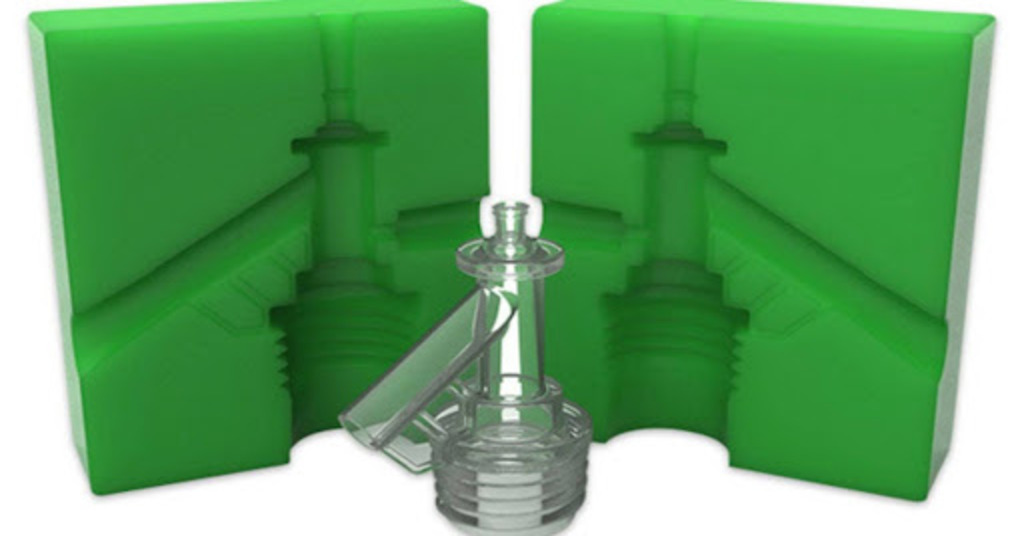
Urethane casting
Urethane molding is also identified by names such as urethane casting, vacuum casting, and polyurethane casting resin. Usually, urethane casting uses a silicon-made mold and is used for fabricating high-strength rigid, rubber-like, or flexible parts, and detailed oriented products manufacturing.
Among the aforementioned techniques, urethane molding is frequently practical, and economical for manufacturers to employ it for a small range of products. In the process, liquid urethane is poured into a silicon-made mold. Upon heating and curing reaction, the desired part is made and slightly demolds upon cooling. Typically, silicon mold is curated under techniques like 3d printing, and CNC machining. The limited cycle times and complexity of mold design have somewhat limited its use. Despite this, urethane casting is extensively used for fabricating structural equipment and developing functional and rapid prototyping.
Try Prolean Now!
Five Benefits of Rubber Overmolding
Let us discuss the five primary benefits given below;
1. Fabricating Custom Parts
One of the core benefits is that it facilitates the fabrication and customization of various designs and plastic products. Further to metal overmolding, manufacturers can overmold plastics to metallic substrates for high-strength, dimensionally stable, and durable parts. Therefore, consumer products are often made through these techniques. Some common examples are listed below;
- Grips
- Rubber handles
- Bottle caps
- Electronic knobs
- Threaded inserts
- Automobile car trims
- Cookware
- Hardware tools, and
- Surgical devices, etc.
2. Enhance Product Performance
Since over-molded parts possess the combined properties of two dissimilar parts, the products made are relatively more resilient and have longevity in use than other conventional techniques. Usually, as discussed above, high-performance thermoplastics like ABS, polyethylene, and polyetherimide are used. So, the parts resulting increase grip, thickness, and ergonomics and mitigate potential issues like unconditional slippages in final-use parts.
3. Better Shock Absorption
The rubber overmolding process also gains significant attention for improving shock absorbance by providing long shelf lives to plastic parts. The commonly used resins for enhancing properties like resistance to abrasion, impacts, and on top, shock absorption; include; silicon, rubber, and neoprene. These key features lend their heavy use across automotive sectors. For example, interior car trims, headrests, doors, and seats are usually made.
4. Reduce Fabrication Costs
Generally speaking, this versatile technique reduces production costs on large parts by reducing excessive assembly needs. It involves a single shot, which means a single assembly in parts forming; therefore, OEM manufacturers benefit from fabricating On-demand parts in speedy cycles or faster rate than other injection molding techniques for after-market needs. In addition, the process usually results in minimum wastage of material, thus cutting manufacturing project expenses.
5. Improve Ergonomics & User Experience
The process provides strong grips and tensile strength to tools and handheld products. Further, it enhances the part’s ergonomics for optimal performance and high-quality standards. Plastic overmolding enables manufacturers to add multiple colors and increase the artistic look of actual parts being over-molded.
What are Some Challenges linked To the Plastic Overmolding Process?
Plastic overmolding has now been practiced across several industries for after-market parts manufacturing. However, it poses some limitations including higher tooling costs, maintaining stringent quality, and process handling.
Moreover, integrating materials with other materials during manufacturing requires expertise and precise control over coordination and alignment. Further, over-molded parts often lead to delamination and poor adhesion due to ineffective surface preparation and mold design. Therefore, to count on these over-molding-related issues, manufacturers must ensure materials’ compatibility (Here is our guide to The Overmold Material Compatibility Chart) and optimize process parameters. In general, multi-step overmolding typically requires the mold temperature up to 70°F – 120°F.
Get Prolean help in Your Overmolding Project
Prolean takes pride in providing overmolding services to businesses across the globe. Our advanced machining technologies help you make your designs practical in short turnarounds. Prolean’s experts are dedicated to providing convenient, comprehensive support, and high-standard quality products per your demand.
In addition to our material flexibility prospects, we provide our valued customers with a wide range of materials to choose from. From on-demand prototype developments to large-scale or mass fabrication projects, our facility helps you by offering affordable, and efficient production solutions without compromising on high-quality standards. Get a fast unbeatable instant online costing quote from our real engineers in just a few hours.
Try Prolean Now!
Summing Up
The overmolding process has become an instrumental technique because of its quick approach to fabricating products and compatibility with various materials. It helps rapidly replicate patterns of rapid prototypes to mass-produced parts by maintaining stringent quality. Parts usually made through the process possess dual resilience and strength.
Further, it provides ease to OEM manufacturers to bring parts to market in a short period. However, a few limitations are associated with a process in terms of setup complexity, and appropriate materials selection. Despite these, it is notably considered a valuable process for its high efficacy in meeting parts’ complexity, and long-use part fabrication capabilities.
FAQs
Q1. What is the major difference between conventional and Co-injection molding?
The first and foremost difference lies in the thickness of the product or end-use parts. The traditional injection molding process usually produces parts with an approximate thickness of 6/8 mm. Co-injection molding, in contrast, produces parts with a relatively higher thickness around 15 to 40 mm. Additionally, co-injection molding requires two separate chambers to conduct the molding process.
Q2. What are common defects associated with over-molded products?
Usually, parts created exhibit flow lines, short shots, skin marks, poor bonding, and delamination surface problems. These problems occur due to ineffective quality control over process parameters like temperature, pressure, and environment.
Q3. How to design parts for the overmolding process?
The most critical aspect of the process is the design of the mold and substrate. Some of the key variables include; the bonding mechanism, controlling over-molded part thickness, venting, and gating for uniform product results. However, it’s difficult to control all parameters, here’s our comprehensive overmolding design guide, that helps you provide valuable information about the designing phase.
Q4. What is the main difference between insert molding, and overmolding?
Although both processes are under the injection molding types, The primary difference is their part fabrication approach. Insert molding is a single-shot injection molding process while overmolding is a two-stage or dual-shot molding process. Also, insert molding being a single shot turns product in minimum time and costs.
Read more: Overmolding vs Insert Molding: Which One to Choose?
Q5. Which metals can be used in the metal overmolding process?
It’s a complex statement as somehow people get confused about whether metals can be over-molded or not. Generally speaking, metals in most cases are used as substrates (base materials), and materials like rubber, and high-grade polymers are utilized to overmold on metallic substrates. This process is called rubber overmolding under which silicon rubber is often used for part fabrication.

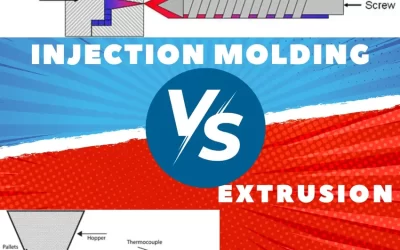
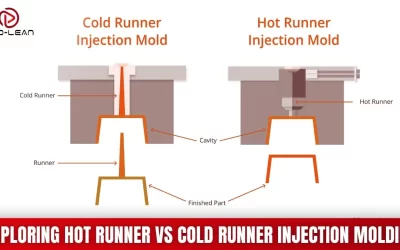
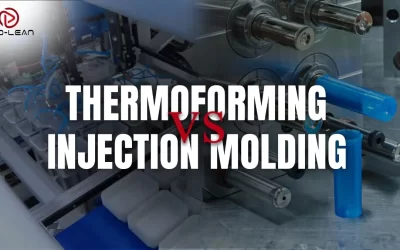
Way cool! Some extremely valid points on pros of each molding types I appreciate you writing these topics technically plus the rest of the website is very good.
Thank you for your comment! We are glad that you found our article informative.